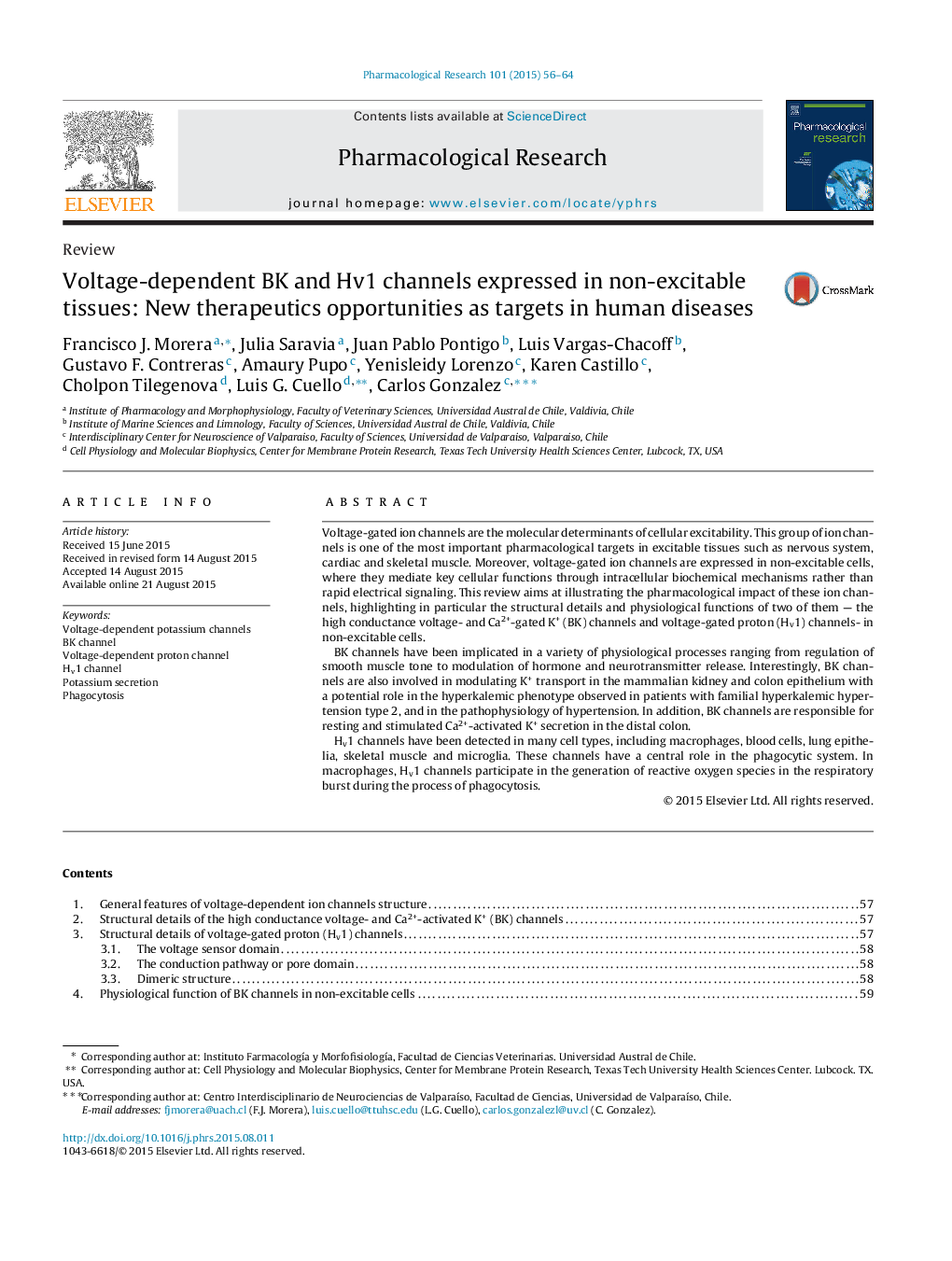| Article ID | Journal | Published Year | Pages | File Type |
|---|---|---|---|---|
| 2561257 | Pharmacological Research | 2015 | 9 Pages |
Voltage-gated ion channels are the molecular determinants of cellular excitability. This group of ion channels is one of the most important pharmacological targets in excitable tissues such as nervous system, cardiac and skeletal muscle. Moreover, voltage-gated ion channels are expressed in non-excitable cells, where they mediate key cellular functions through intracellular biochemical mechanisms rather than rapid electrical signaling. This review aims at illustrating the pharmacological impact of these ion channels, highlighting in particular the structural details and physiological functions of two of them — the high conductance voltage- and Ca2+-gated K+ (BK) channels and voltage-gated proton (Hv1) channels- in non-excitable cells.BK channels have been implicated in a variety of physiological processes ranging from regulation of smooth muscle tone to modulation of hormone and neurotransmitter release. Interestingly, BK channels are also involved in modulating K+ transport in the mammalian kidney and colon epithelium with a potential role in the hyperkalemic phenotype observed in patients with familial hyperkalemic hypertension type 2, and in the pathophysiology of hypertension. In addition, BK channels are responsible for resting and stimulated Ca2+-activated K+ secretion in the distal colon.Hv1 channels have been detected in many cell types, including macrophages, blood cells, lung epithelia, skeletal muscle and microglia. These channels have a central role in the phagocytic system. In macrophages, Hv1 channels participate in the generation of reactive oxygen species in the respiratory burst during the process of phagocytosis.
Graphical abstractFigure optionsDownload full-size imageDownload high-quality image (120 K)Download as PowerPoint slide
